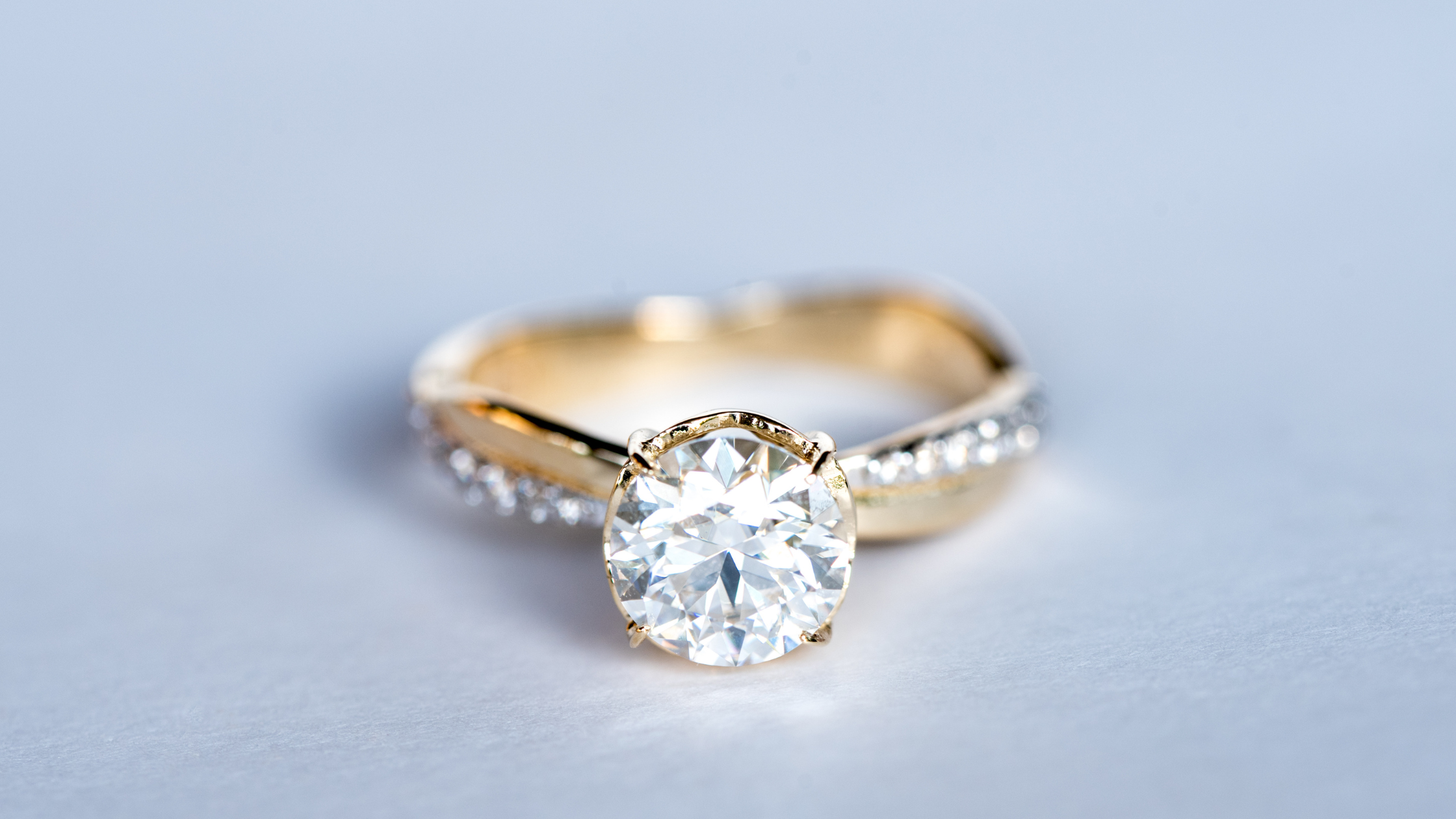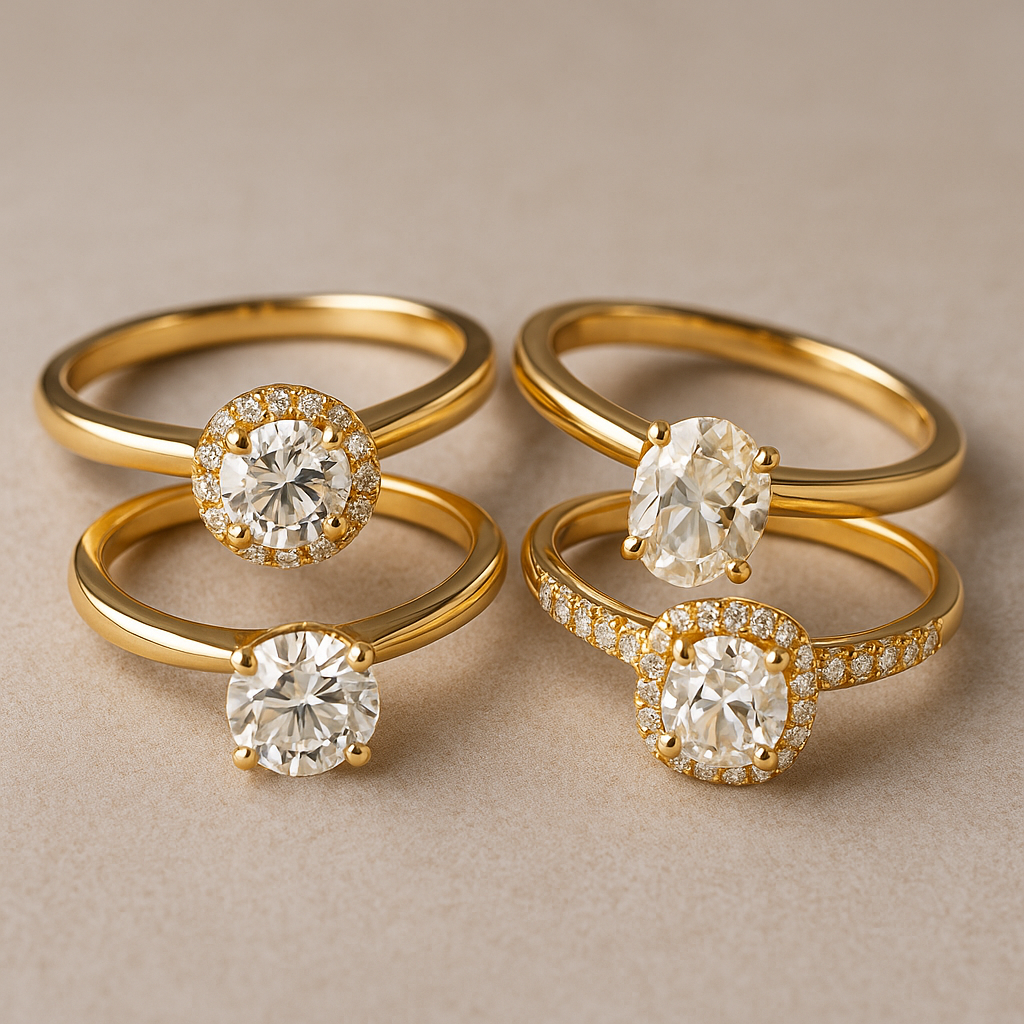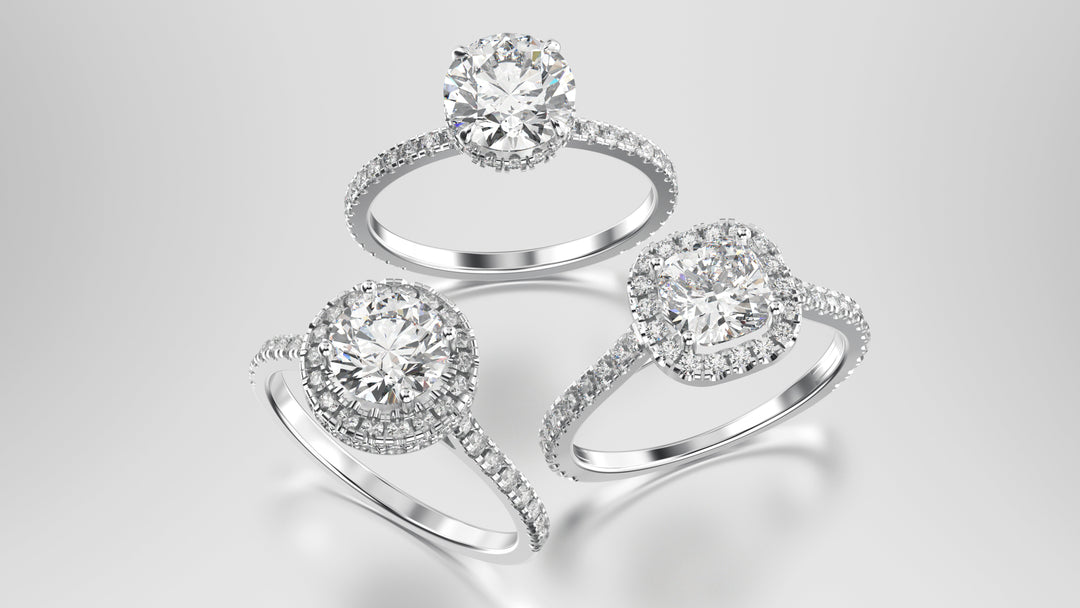In the sparkling world of jewelry, diamond rings have always been a symbol of elegance and affection. However, not everyone may choose or be able to invest in natural diamonds for various reasons. This is where simulated diamond rings come into play, offering beauty and brilliance at a more accessible price point. At Wm. Harold & Sons, we understand the allure of diamonds and also recognize the value of alternatives like simulated diamonds. This blog will explore what simulated diamond rings are, how they differ from real diamonds and other alternatives, and why they might be the perfect choice for your jewelry needs.
Understanding Simulated Diamonds
Simulated diamonds, or diamond simulants, are stones that mimic the appearance of real diamonds but do not possess the same chemical and physical characteristics. Unlike synthetic diamonds, which are real diamonds grown in a lab, simulants are entirely different materials designed only to look like diamonds.
Common Types of Simulated Diamonds
- Cubic Zirconia (CZ): The most popular and well-known diamond simulant, cubic zirconia is made from zirconium dioxide and offers exceptional brilliance and clarity.
- Moissanite: Originally discovered in a meteor crater, moissanite is a gemstone composed of silicon carbide that is remarkably close to diamonds in terms of hardness and sparkle.
Characteristics of Simulated Diamonds
- Appearance: Simulants can be nearly indistinguishable from real diamonds to the untrained eye, making them an attractive option for many.
- Durability: While durable, simulants like cubic zirconia and moissanite are not as hard as natural diamonds, meaning they may scratch more easily over time.
- Cost: Simulated diamonds are significantly less expensive than natural diamonds, making them an affordable luxury.
Detailed Comparison of Simulated Diamonds: Cubic Zirconia vs. Moissanite
When considering simulated diamonds, it's crucial to understand how different simulants such as cubic zirconia (CZ) and moissanite perform under various lighting conditions. Each simulant reflects light uniquely, affecting its appearance and its ability to mimic the look of a natural diamond.
Cubic Zirconia (CZ)
Refractive Index and Brilliance: Cubic zirconia has a refractive index of 2.15-2.18, which is lower than that of a natural diamond (which is around 2.42). However, CZ has a higher dispersion rate (the splitting of light into spectral colors), giving it a noticeable "fire" that can exceed that of a natural diamond.
- Indoor Lighting: Under standard indoor lighting, CZ can appear quite brilliant and fiery, often displaying a strong play of color that can look slightly artificial compared to the more subdued fire of a natural diamond.
- Natural Light: In sunlight, the high dispersion of CZ becomes very apparent. The intense flashes of color can distinguish it from a natural diamond, whose sparkle tends to be more balanced between brilliance (white light) and fire (colored light).
- Low Light: In dimmer settings, cubic zirconia can still maintain a significant level of sparkle, but its tendency to look glassy or oily may become more pronounced without strong lighting to enhance its fire.
Moissanite
Refractive Index and Brilliance: Moissanite boasts a refractive index ranging from 2.65 to 2.69, surpassing even that of natural diamonds. This gives it exceptional brilliance and an ability to refract light very effectively.
- Indoor Lighting: Moissanite shines brilliantly under indoor lighting, often displaying more brilliance than a natural diamond. Its fire is also pronounced, with colorful flashes that can captivate the eye.
- Natural Light: In sunlight, moissanite's exceptional refractive index makes it extremely lively and sparkling. Its greater fire can be a giveaway, as it produces more colorful flashes than a natural diamond. However, to untrained eyes, this can simply read as a highly brilliant gemstone.
- Low Light: Moissanite continues to perform well in low-light conditions, where its ability to catch even small amounts of light results in significant sparkle. Its brilliance can sometimes cause it to appear more luminous than natural diamonds in these settings.
Durability and Cost Considerations
- Durability: While both CZ and moissanite are durable compared to other gemstones, moissanite ranks much higher on the Mohs scale of hardness (9.25) compared to CZ (around 8.5). This makes moissanite more suitable for everyday wear, as it is less likely to scratch or chip.
- Cost: Moissanite is generally more expensive than cubic zirconia due to its closer similarity to diamond in terms of hardness and light performance. However, both are significantly more affordable than natural diamonds, making them attractive alternatives for buyers on a budget.
Benefits of Choosing Simulated Diamond Rings
Opting for a simulated diamond ring comes with several advantages that go beyond cost savings:
Affordability
Simulated diamonds offer the look of real diamonds without the hefty price tag, allowing you to allocate funds elsewhere or purchase a more elaborate setting.
Variety and Flexibility
- Design Options: The affordability of simulants means you can opt for larger or more uniquely designed rings.
- Experimentation: They are an excellent choice for fashion jewelry or for trying out styles before committing to a more expensive piece.
How to Choose the Right Simulated Diamond Ring
Selecting the perfect simulated diamond ring involves similar considerations as choosing a natural diamond ring:
Understanding Quality
- Grading: While simulants don’t have a grading system like natural diamonds, it’s important to purchase from reputable sellers who provide high-quality, well-crafted pieces.
- Clarity and Color: Look for simulants that are clear and colorless to closely mimic the look of a genuine diamond.
Matching Style with Lifestyle
- Durability Needs: If you lead an active lifestyle, consider harder simulants like moissanite that can better withstand daily wear.
- Personal Style: Whether you prefer a classic or modern design, make sure the ring reflects your personal style and fits comfortably with your daily attire.
Considerations for Setting
- Metal Choices: High-quality metals like platinum and gold can complement the brilliance of simulants and enhance the overall aesthetics of the ring.
- Setting Security: Ensure the setting you choose securely holds the simulant, as some settings may be designed specifically for the hardness and properties of natural diamonds.
Conclusion
Whether you choose cubic zirconia for its exceptional fire and affordability, or moissanite for its durability and closer resemblance to diamond brilliance, simulated diamonds can meet a variety of needs and preferences.
Explore our selection of simulated diamond rings at Wm. Harold & Sons or visit us in Newport Beach to discover the perfect ring that aligns with your taste, lifestyle, and budget. Whether you’re shopping for an engagement ring, a special gift, or simply treating yourself, we’re here to make your experience memorable and satisfying.





